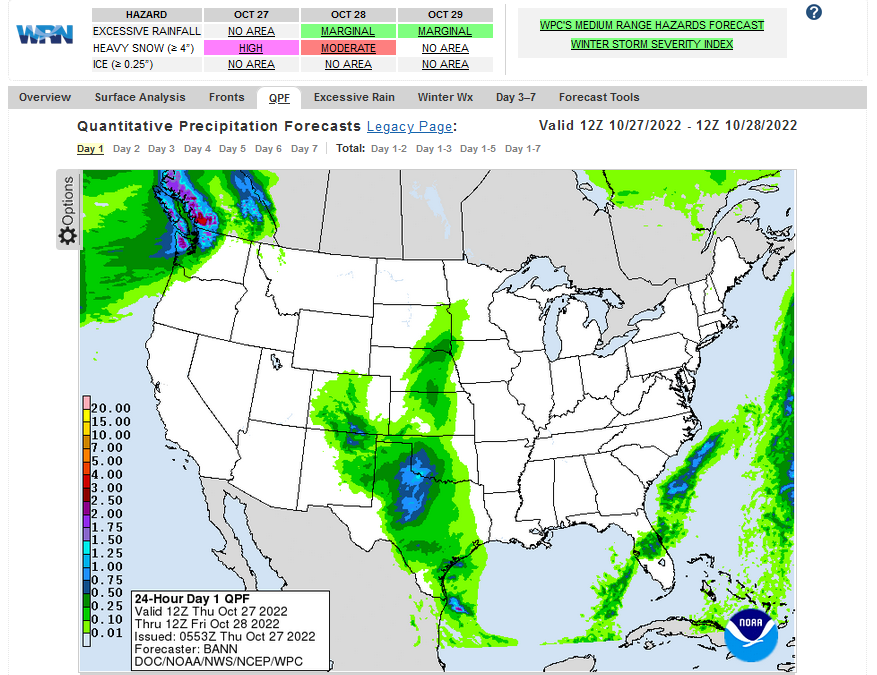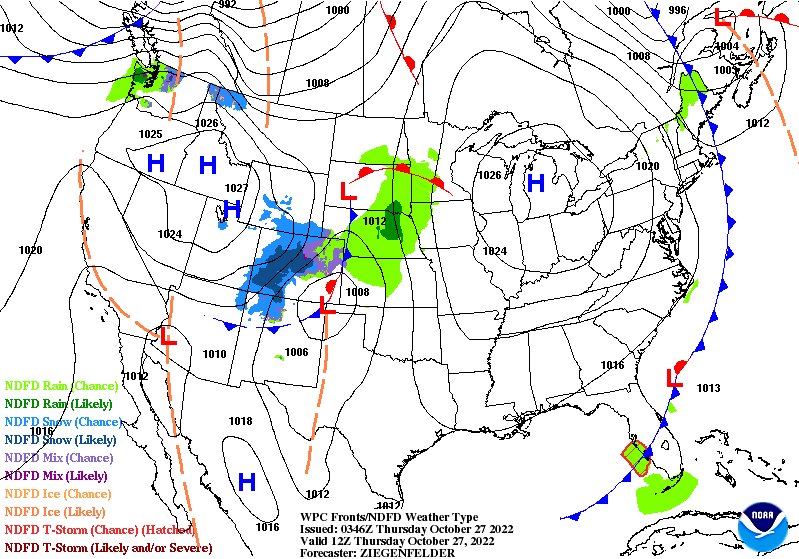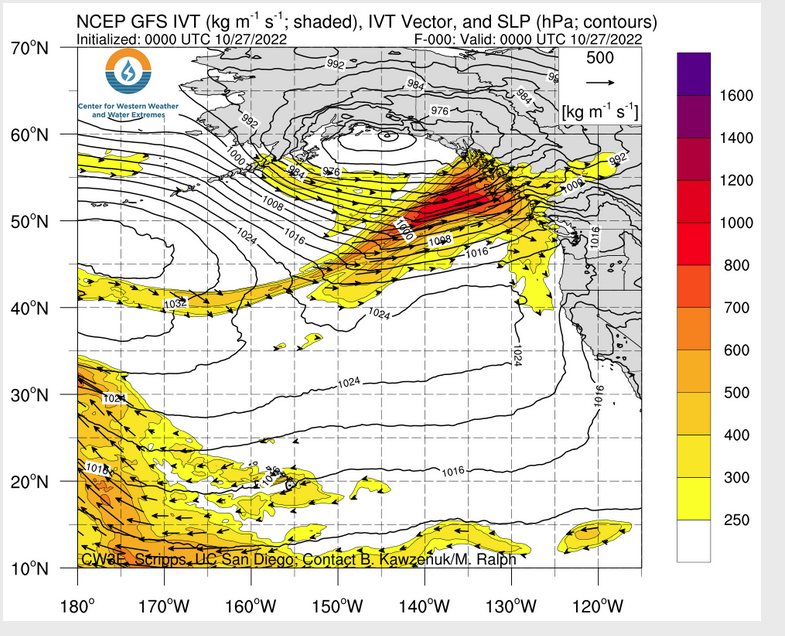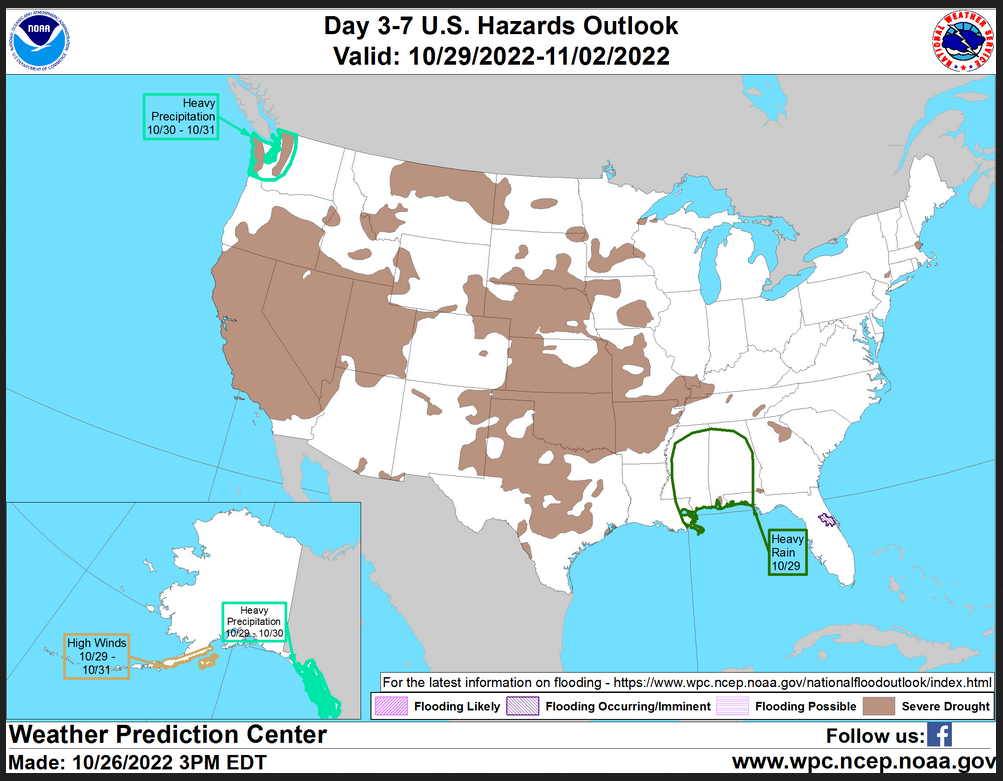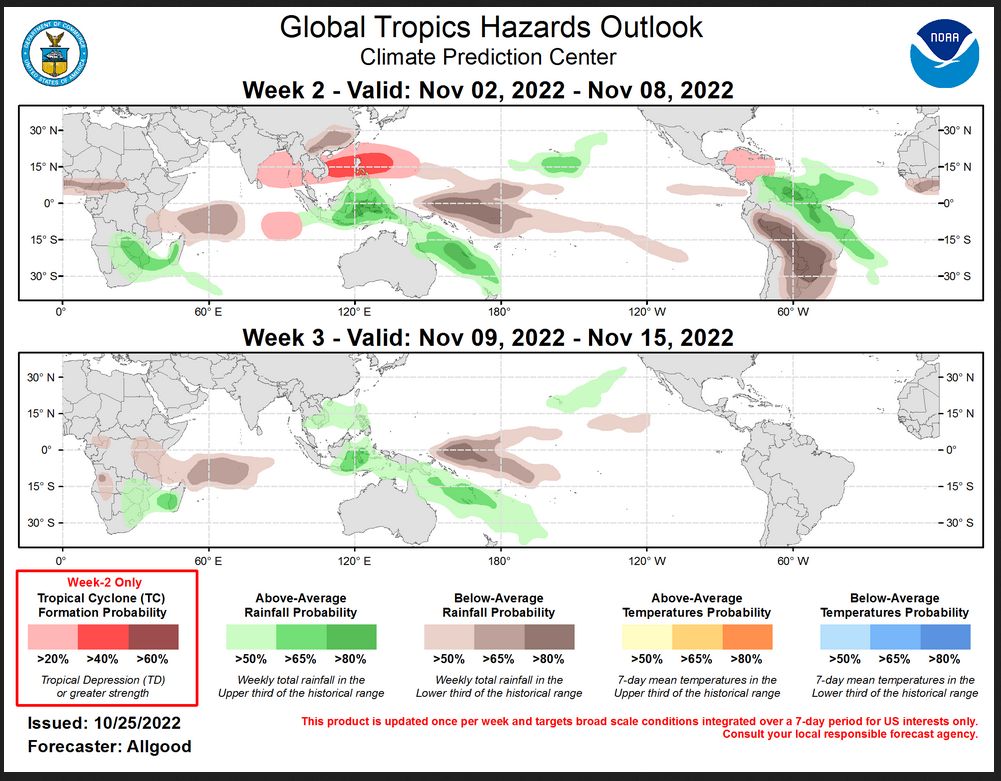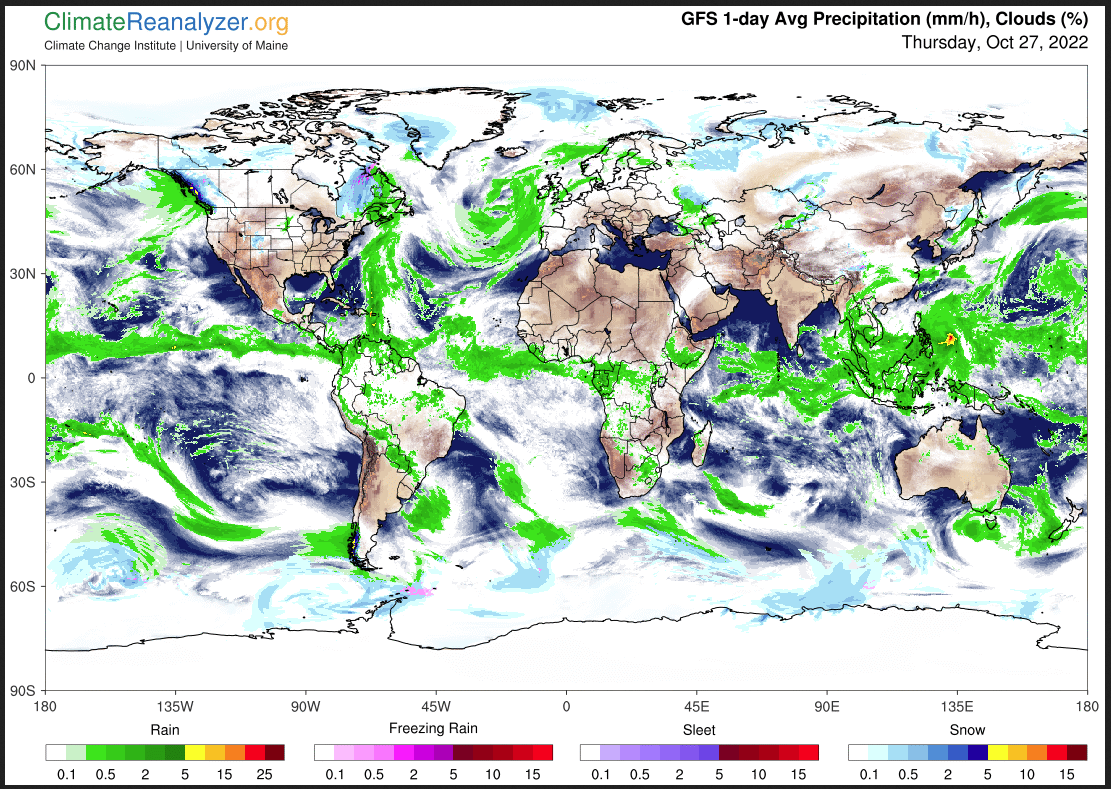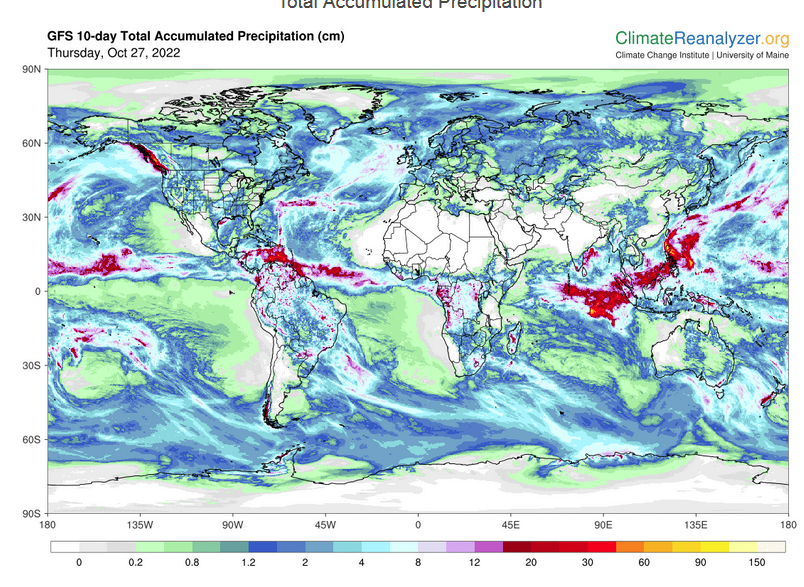Here is what we are paying attention to this evening and the next 48 hours from this evening’s NWS Forecast.
...Unsettled weather in northern New England will exit the region by Thursday morning leading to pleasant end of week... ...High-elevation accumulating snow across the Rockies through Thursday evening as upper-level energy digs southward... ...Showers and thunderstorms in the Southern Plains tomorrow and Friday as a potent storm system tracks eastward...
Continuation of the NWS Short Range Forecast (It is updated twice a day and these updates can be found here.
Unsettled weather will continue across northern New England this evening as an upper-level trough slides eastward and draws anomalously moist air into the region, leading to the potential for heavy rainfall and localized flash flooding. Conditions will begin to improve overnight as precipitation progresses northeastward into Canada, resulting in pleasant weather and slightly above-average temperatures to close out the remainder of the work week. Outside of northern New England, much of the eastern third of the nation will enjoy tranquil conditions through Friday as high pressure slides eastward. Temperatures will remain slightly above-average-to-average, with highs in the 60s and 70s across much of the region today, before dropping closer to normal on Thursday and Friday. Moreover, clouds will begin to break during the overnight Wednesday hours, resulting in beautiful conditions to view the fall foliage that has overtaken much of the northern Mid-Atlantic this past week. A strong upper-level low will continue to bring unsettled weather to the Intermountain West through Thursday before diving southeastward into the central and southern Plains by Thursday afternoon. The system will produce rain and higher-elevation snow across the northern Great Basin and Pacific Northwest this afternoon, with precipitation expanding eastward into parts of the Northern and Central Rockies tonight, leading to the issuance of Winter Weather Advisories in the Colorado Rockies, where the potential exists for accumulating snowfall. Conditions should begin to improve across the region Thursday evening as the system progresses into the southern Plains. As the system dives southward, a strong, southerly moisture fetch off of the Gulf of Mexico will allow for anomalously moist air to stream northward into the southern Plains and Gulf Coast, leading to the potential for showers and thunderstorms that could lead to heavy rainfall across the region on Thursday and Friday. Therefore, a Marginal Risk of Excessive Rainfall has been hoisted over parts of the Southern Plains and Gulf Coast from Thursday into Friday morning. The associated heavy rain will create localized areas of flash flooding, affecting areas that experience rapid runoff with heavy rain. In addition to the possibility of isolated flash flooding, the potential also exists for severe thunderstorms in the warm sector of the system, leading to a Marginal Risk of Severe Thunderstorms issued by the Storm Prediction Center for parts of the region tomorrow into Friday. Elsewhere, weak onshore flow off the North Pacific will produce isolated rain showers and potentially higher-elevation snow over parts of the Pacific Northwest through Friday.
Current forecast of heavy precipitation (Updates can be found HERE)
Maps that relate the forecast to geography can be found by clicking Here for Day 1 and Here for Day 2.
Here is a 60-hour animated forecast map that shows how the short-term forecast is expected to play out
If it needs to be updated click here.
ATMOSPHERIC RIVERS
Click HERE to update. HERE is some useful information about Atmospheric Rivers.
HAZARDS OUTLOOKS
Click here for the latest complete Day 3 -7 Hazards forecast which updates only on weekdays. Once a week probably Monday or Tuesday I will update the images. I provided the link for readers to get daily updates on weekdays. Use your own judgment to decide if you need to update these images.
Worldwide Tropical Forecast
(This graphic updates on Tuesdays) If it has not been updated, you can get the update by clicking here This is a new approach and covers weeks 2 and 3 not weeks 1 and 2. It has more information but I am having trouble getting used to it. As usual, it comes with a discussion which is below
Detailed Maps and Reports for the Western Atlantic and the Pacific Oceans
Below are four maps that summarize the situation for the Atlantic, Eastern, Central Pacific, and Western Pacific. Additional information can be accessed by clicking HERE
First the Atlantic
Click to view the forecast map and have access to additional information https://www.nhc .noaa.gov/gtwo.php?basin= atlc&fdays=5
Then Eastern Pacific
Click to view the forecast map and have access to additional information https://www.nhc.noaa.gov/gtwo.php?basin=epac&fdays=5
Then Central Pacific
Click to view the forecast map and have access to additional information https://www.nhc.noaa.gov/gtwo.php?basin=cpac&fdays=5
And the Western Pacific
Click to view the forecast map and have access to additional information https://www.metoc.navy.mil/jtwc/jtwc.html
Some Intermediate-Term Outlooks
Links to “Outlook” maps and discussions for three time periods. Days 6 – 10, Days 8 – 14, and Weeks 3 and 4. An outlook differs from a forecast based on how NOAA uses these terms in that an “outlook” presents information from deviation from normal and the likelihood of these deviations.
You have to click on the links because they do not update automatically and I do not want to have stale images in the article. But it is not difficult to click on a link and you get a large image plus a discussion. On Fridays in a separate article, we will show the images and provide a link in this article that article. But remember what you will see is the images as of Friday. But here you can get the current images simply by clicking on them. Then hit the return arrow at the upper left of your screen to return to the article. You will not find this information easily anywhere else.
Right now you can find these maps here (We show them every Friday there but you can click above and find them).
Worldwide Weather
Below is the current or short-term precipitation forecast which can be updated by clicking HERE Additional maps can be obtained HE RE.
Month to Date Information
Month to date Temperature can be found at https://hprcc.unl.edu/products/maps/acis/MonthTDeptUS.png
Month to date Precipitation can be found at https://hprcc.unl.edu/products/maps/acis/MonthPNormUS.png

